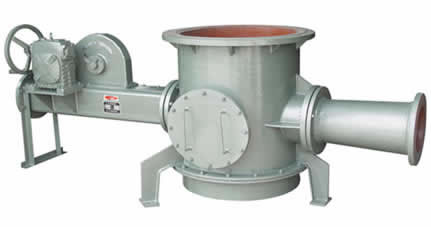


Introduction
For over a century, Turkmenistan has harbored dreams of industrial advancement and modernization. One significant stride towards these ambitions is the recent development in the handling of gypsum powder through low-pressure pneumatic conveying systems. This innovation not only enhances operational efficiency but also aligns with the nation's broader vision for sustainable and advanced industrial practices.
Historical Context and Industrial Ambitions
Turkmenistan's journey towards industrialization has been long and arduous. Since gaining independence in 1991, the country has sought to diversify its economy beyond natural gas, leveraging its rich mineral resources. Gypsum, abundant in Turkmenistan, presents a valuable opportunity. However, traditional methods of handling this material have often been labor-intensive, inefficient, and prone to dust-related health hazards.
The Advent of Low-Pressure Pneumatic Conveying Systems
Enter low-pressure pneumatic conveying systems—a technological marvel that promises to revolutionize the way gypsum powder is handled. These systems use air pressure to transport powdered materials through a network of pipes from one location to another. The advantages are manifold: reduced labor costs, minimized dust emissions, and increased throughput.
How It Works
Low-pressure pneumatic conveying systems operate on simple yet effective principles. Air is blown into a hopper containing the gypsum powder, creating a fluidized state where the powder becomes suspended in air. This mixture is then transported through pipelines to the desired destination, where the air is filtered out, leaving behind the powder.
The system relies on precise control of air pressure and flow rates to ensure that the gypsum powder remains evenly distributed throughout the conveyance process. Special attention is given to maintaining optimal pressure levels to prevent clogging or loss of material.
Benefits and Challenges

The adoption of low-pressure pneumatic conveying systems brings numerous benefits. Firstly, it drastically reduces the need for manual labor, thereby lowering operational costs and minimizing human error. Secondly, the enclosed nature of the system significantly cuts down on dust emissions, improving workplace safety and environmental sustainability. Lastly, the efficiency of these systems allows for higher throughput, enabling Turkmenistan to meet growing domestic and international demand for gypsum products.
However, implementing such advanced technology comes with its own set of challenges. Initial investment costs can be high, requiring substantial financial outlay for equipment and training. Additionally, the complexity of the system necessitates skilled technicians for maintenance and operation. Overcoming these hurdles requires concerted efforts from both the public and private sectors.
A Vision Fulfilled Through Hard Work
Despite these challenges, the successful implementation of low-pressure pneumatic conveying systems in Turkmenistan stands as a testament to the nation's unwavering commitment to progress. This achievement is a realization of a century-long dream, made possible through hard work, perseverance, and strategic planning.
Local enterprises have played a crucial role in this transformation. By investing in training programs and collaborating with international experts, they have built the necessary skills and knowledge base to operate and maintain these sophisticated systems. Government policies supportive of industrial innovation have further facilitated this progress, providing incentives and creating a conducive environment for technological adoption.
Future Prospects
Looking ahead, the integration of low-pressure pneumatic conveying systems marks just the beginning. As Turkmenistan continues to embrace industrial innovation, there is immense potential for further advancements. The success of this initiative could pave the way for similar applications across other sectors, driving overall economic growth and development.
Moreover, as global demand for eco-friendly and efficient industrial processes increases, Turkmenistan is well-positioned to become a key player in the international market. By continuing to invest in technology and human capital, the country can sustain its momentum and achieve even greater heights.
Conclusion
The journey of gypsum powder handling with low-pressure pneumatic conveying systems in Turkmenistan is a compelling narrative of ambition, innovation, and hard work. It underscores the nation's ability to overcome historical challenges and seize new opportunities for growth. As Turkmenistan marches forward, this success story serves as an inspiration for other nations striving to modernize their industrial landscapes while adhering to principles of sustainability and efficiency.
Chinese manufacturer - Zhongyuan Innovation Machinery Co. LTD
Email: 18539447368@163.com
Address: Zhengzhou, Henan, China
Tel: +8618539447368
Privacy Policy Allsites Mobile site